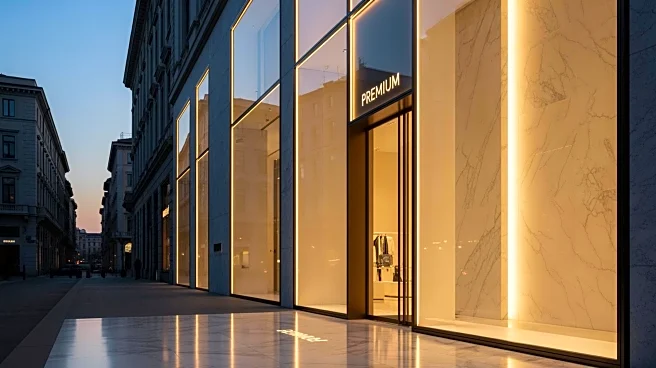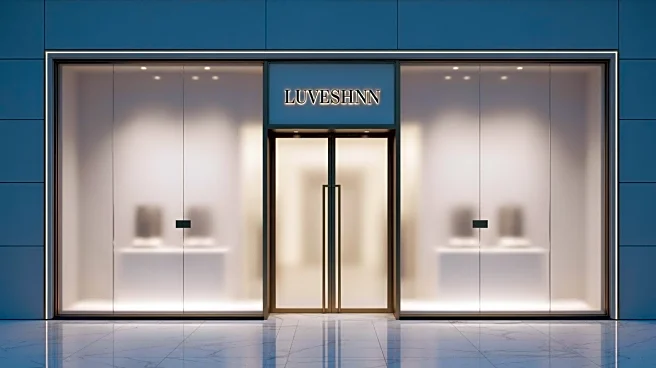What's Happening?
Amiri, a California-based luxury brand known for its fusion of streetwear and rock n’ roll fashion, has opened its first standalone European retail destination in Milan. The new flagship store marks a significant
expansion for the brand, which has previously established its presence in Europe through wholesale distribution and appearances at Paris Fashion Week. The Milan store features a lounge with vintage furniture and art, blending Amiri's California roots with Milan's aesthetic. This move is part of Amiri's strategy to become a global brand, with previous expansions into regions like the Middle East and Latin America.
Why It's Important?
The opening of Amiri's Milan flagship store is a strategic move to solidify its presence in one of the world's fashion capitals, enhancing its global brand recognition. This expansion into Europe is crucial for Amiri as it seeks to tap into the lucrative European luxury market, which is known for its high demand for premium fashion. By establishing a physical retail presence, Amiri can directly engage with European consumers, offering them a unique shopping experience that reflects the brand's distinctive style. This development could potentially increase Amiri's market share and influence in the global fashion industry.
What's Next?
Following the opening of its Milan store, Amiri may continue to expand its retail footprint across Europe and other international markets. The brand's strategy could involve opening additional flagship stores in key cities to further enhance its global presence. Additionally, Amiri might explore collaborations with European fashion events or designers to strengthen its brand identity and appeal to local consumers. The success of the Milan store could serve as a model for future expansions, influencing how Amiri approaches new markets and adapts its offerings to different cultural contexts.
Beyond the Headlines
Amiri's expansion into Europe highlights the growing trend of American fashion brands seeking international growth opportunities. This move reflects the increasing globalization of the fashion industry, where brands must adapt to diverse consumer preferences and cultural influences. The Milan store's design, which incorporates elements of both California and Milan, exemplifies how brands can blend different cultural aesthetics to create a unique identity. This approach not only attracts a broader audience but also fosters cross-cultural exchanges within the fashion community.














